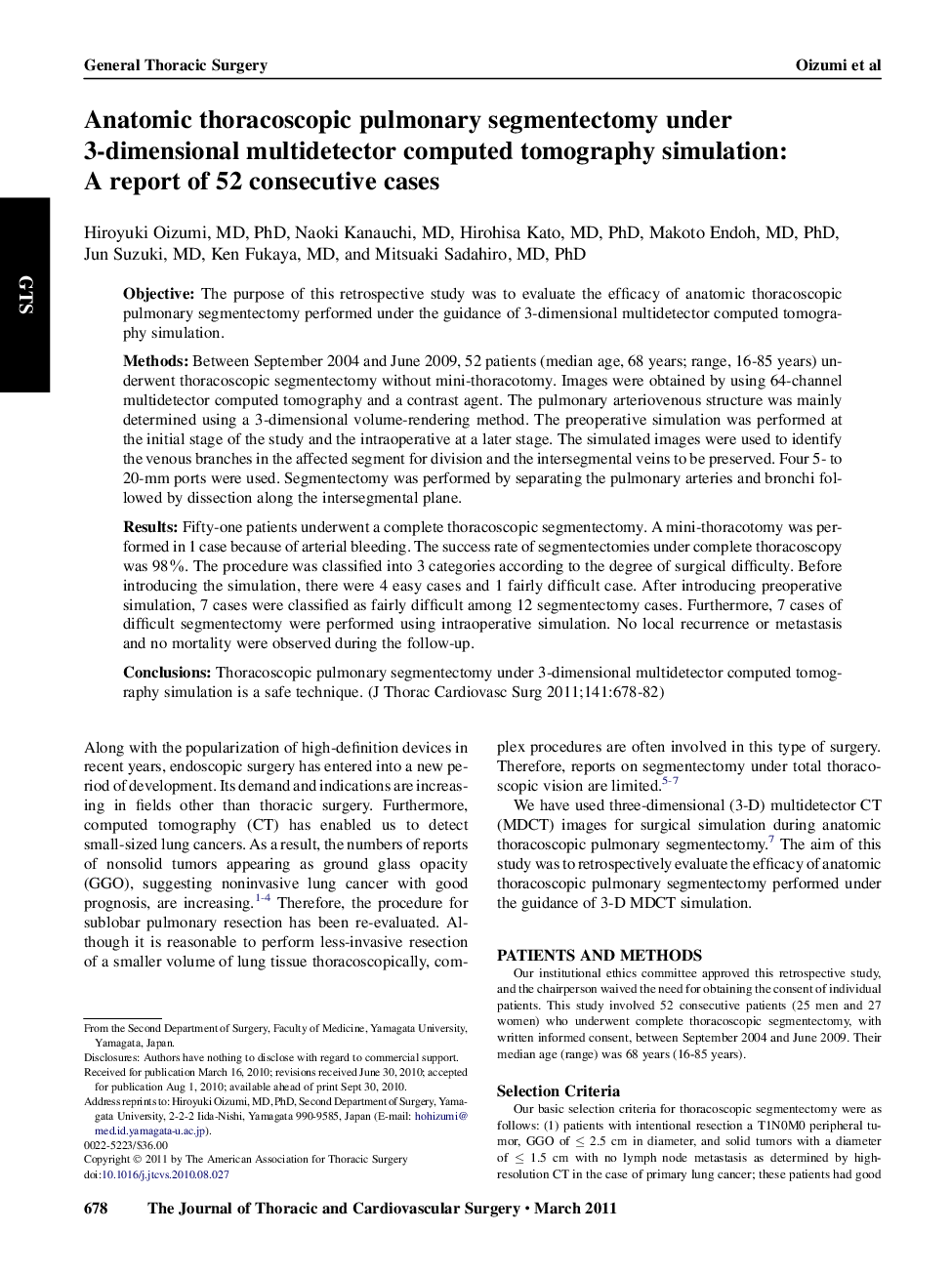| Article ID | Journal | Published Year | Pages | File Type |
|---|---|---|---|---|
| 2981614 | The Journal of Thoracic and Cardiovascular Surgery | 2011 | 5 Pages |
ObjectiveThe purpose of this retrospective study was to evaluate the efficacy of anatomic thoracoscopic pulmonary segmentectomy performed under the guidance of 3-dimensional multidetector computed tomography simulation.MethodsBetween September 2004 and June 2009, 52 patients (median age, 68 years; range, 16-85 years) underwent thoracoscopic segmentectomy without mini-thoracotomy. Images were obtained by using 64-channel multidetector computed tomography and a contrast agent. The pulmonary arteriovenous structure was mainly determined using a 3-dimensional volume-rendering method. The preoperative simulation was performed at the initial stage of the study and the intraoperative at a later stage. The simulated images were used to identify the venous branches in the affected segment for division and the intersegmental veins to be preserved. Four 5- to 20-mm ports were used. Segmentectomy was performed by separating the pulmonary arteries and bronchi followed by dissection along the intersegmental plane.ResultsFifty-one patients underwent a complete thoracoscopic segmentectomy. A mini-thoracotomy was performed in 1 case because of arterial bleeding. The success rate of segmentectomies under complete thoracoscopy was 98%. The procedure was classified into 3 categories according to the degree of surgical difficulty. Before introducing the simulation, there were 4 easy cases and 1 fairly difficult case. After introducing preoperative simulation, 7 cases were classified as fairly difficult among 12 segmentectomy cases. Furthermore, 7 cases of difficult segmentectomy were performed using intraoperative simulation. No local recurrence or metastasis and no mortality were observed during the follow-up.ConclusionsThoracoscopic pulmonary segmentectomy under 3-dimensional multidetector computed tomography simulation is a safe technique.
